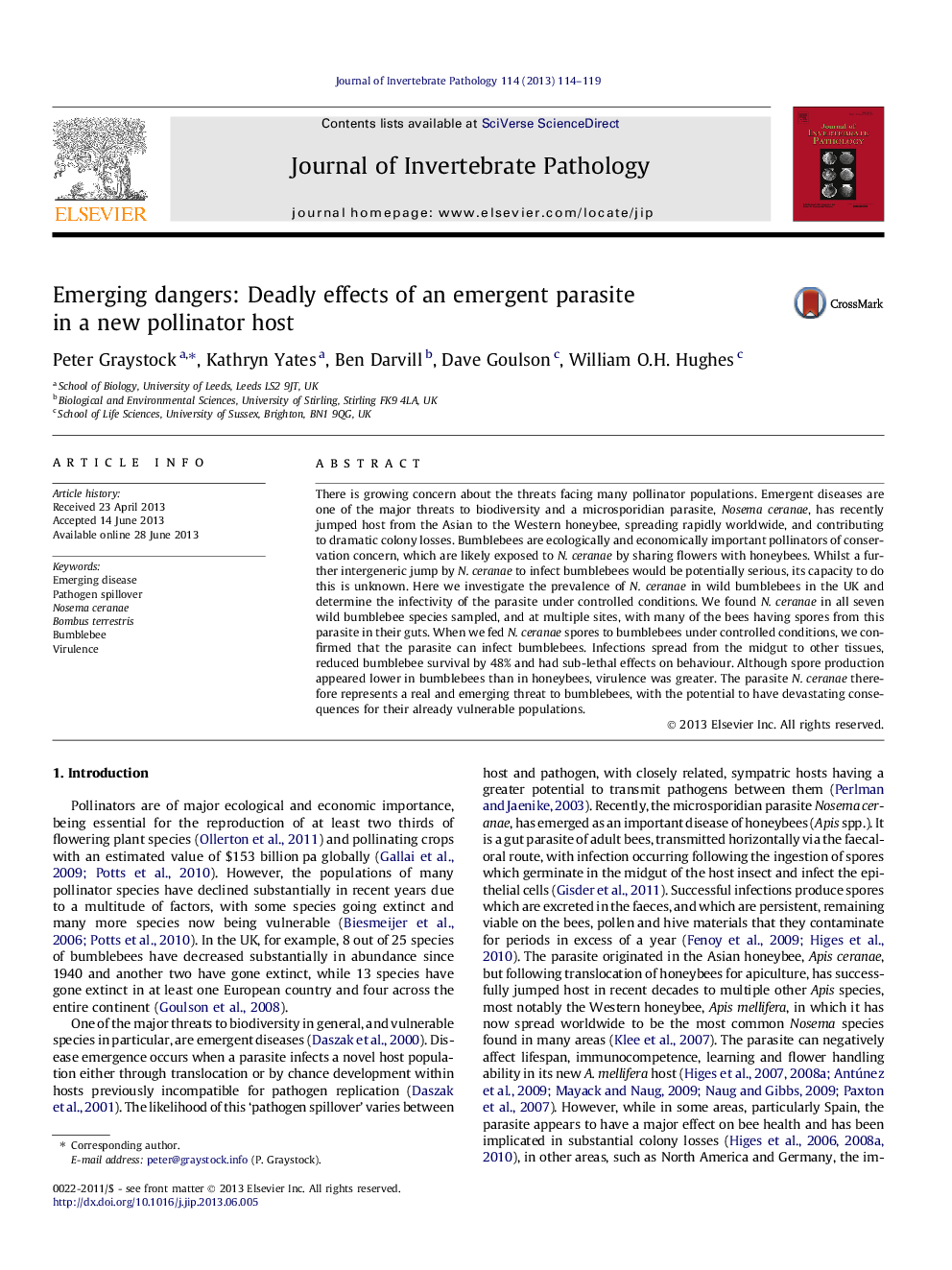| کد مقاله | کد نشریه | سال انتشار | مقاله انگلیسی | نسخه تمام متن |
|---|---|---|---|---|
| 4557780 | 1329897 | 2013 | 6 صفحه PDF | دانلود رایگان |

• We investigate the status of the emergent honeybee parasite, Nosema ceranae, in bumblebees.
• We molecularly identify the presence of N. ceranae in multiple species of wild bumblebee across sites in England.
• We inoculate Bombus terrestris bumblebees with N. ceranae spores to test its infectivity.
• We find, following the ingestion of N. ceranae spores, bumblebees suffer from altered behaviour and reduced survival.
• Comparatively, N. ceranae has higher virulence in bumblebees than in its natural honey bee host.
There is growing concern about the threats facing many pollinator populations. Emergent diseases are one of the major threats to biodiversity and a microsporidian parasite, Nosema ceranae, has recently jumped host from the Asian to the Western honeybee, spreading rapidly worldwide, and contributing to dramatic colony losses. Bumblebees are ecologically and economically important pollinators of conservation concern, which are likely exposed to N. ceranae by sharing flowers with honeybees. Whilst a further intergeneric jump by N. ceranae to infect bumblebees would be potentially serious, its capacity to do this is unknown. Here we investigate the prevalence of N. ceranae in wild bumblebees in the UK and determine the infectivity of the parasite under controlled conditions. We found N. ceranae in all seven wild bumblebee species sampled, and at multiple sites, with many of the bees having spores from this parasite in their guts. When we fed N. ceranae spores to bumblebees under controlled conditions, we confirmed that the parasite can infect bumblebees. Infections spread from the midgut to other tissues, reduced bumblebee survival by 48% and had sub-lethal effects on behaviour. Although spore production appeared lower in bumblebees than in honeybees, virulence was greater. The parasite N. ceranae therefore represents a real and emerging threat to bumblebees, with the potential to have devastating consequences for their already vulnerable populations.
.Figure optionsDownload as PowerPoint slide
Journal: Journal of Invertebrate Pathology - Volume 114, Issue 2, October 2013, Pages 114–119